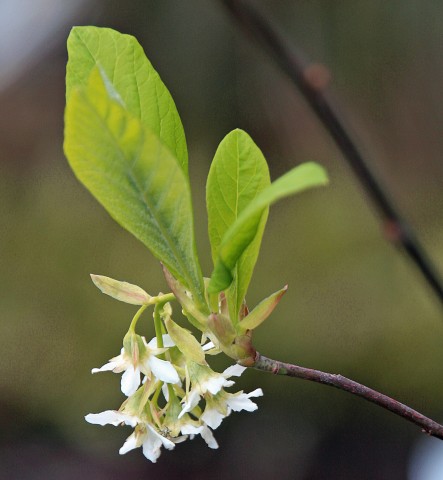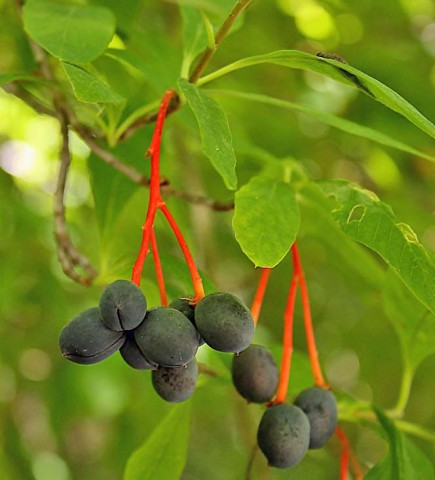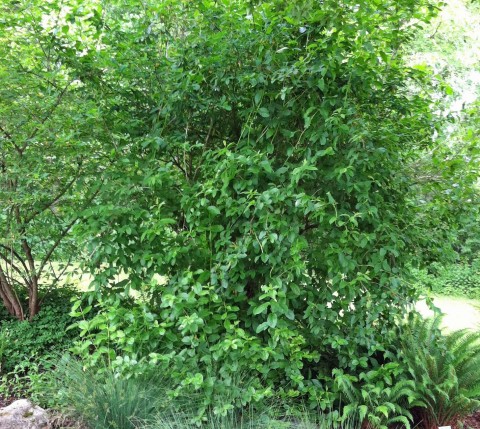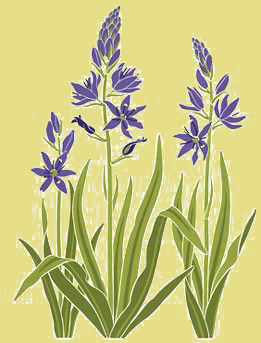Indian Plum



1 - Image by www.nwplants.com
Licensed Under: CC-BY-SA-3.0 Unported
2 - Image by Leslie Seaton
Licensed Under: CC-BY-2.0 Generic
3 - Image by Lindsey Vallance
Oemleria cerasiformis, commonly called Indian plum or osoberry, is a large deciduous shrub, growing to 12'-18' tall and 10'-14' wide. It produces arching branches from the base of the plant. Indian Plum leafs out and blooms in late winter, the first shrub in the garden to do so. The leaves are a bright green and stand up on the branches, while the racemes of white flowers are pendulous. It does best in moist conditions in partial shade, but is intolerant of heavy shade and very wet soil. Indian plum is found west of the Cascades from Northern California to Southern British Columbia, at elevations below 5500 feet.
Indian plum flowers are an important source of nectar for early bumblebees and Anna's hummingbirds. Later, small clusters of tiny "plums" ripen, turning from yellow to pink and finally to dark blue. They provide food for a variety of birds and even some mammals, such as bear, deer, coyotes, foxes and raccoons. As a food source and as cover for birds and small mammals, Indian plum makes a great addition to a hedgerow planted with a mixture of native plants..
The ripe berries of Oemleria cerasiformis were eaten by
some Native Americans and the twigs were chewed and
used medicinally on skin sores. The wood is very strong,
but the small diameter of the branches limited its usefulness
to the making of small implements, such as spoon, combs
and knitting needles.
Look for
See the links below for more information on Indian plum.

